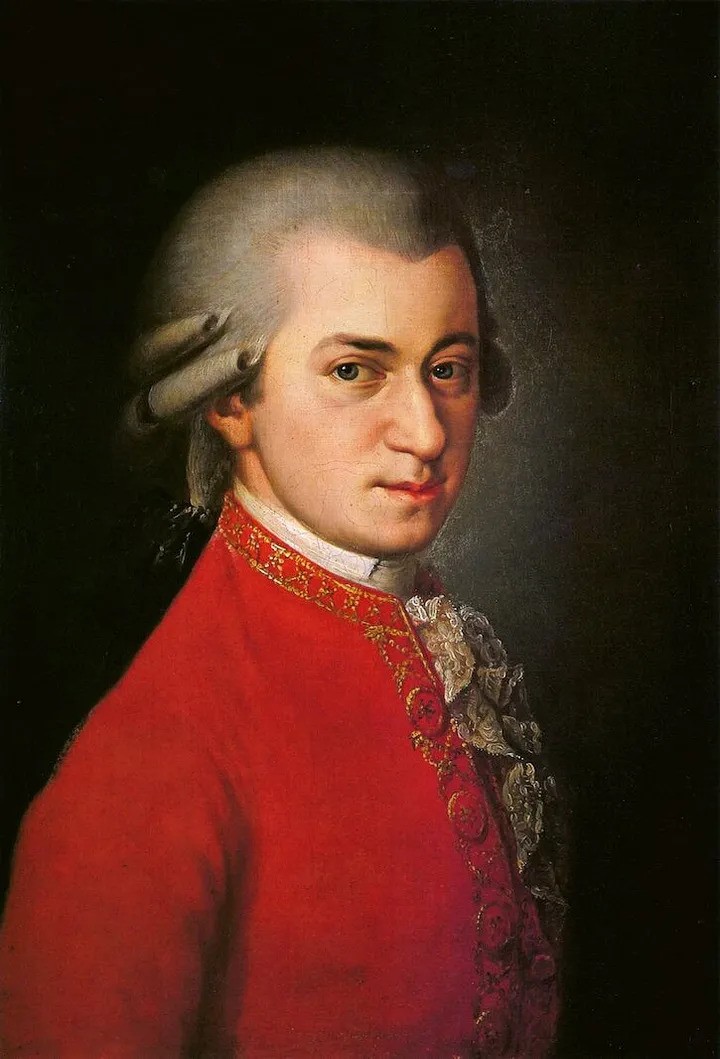Contents
What is a source?
A source can be anything that helps you answer a research question. Thus, the feasibility of a paper greatly depends on the availability of suitable sources on a certain topic, as it is the main informational basis for any argument a paper strives for. Sources encompass all literature, documents, material objects, recordings and other materials, from which information is derived and included in a scholarly work. Information can be obtained in various ways, e.g. through the evaluation and interpretation of existing sources, which have mostly been gathered into libraries, databases and archives. Other approaches focus on orally transmitted traditions that often leave no material traces. Consequently the methodology used, such as interviews and interview-transcriptions, makes it so that the sources are not only transformed in the process but essentially created anew. A precise knowledge of the types of sources, their origins and their characteristics is therefore essential for an appropriate interpretation and analysis.
What are primary sources then?
The term primary source refers to any type of material left from the time period being researched that gives a first-hand view of a subject. As opposed to secondary sources, which are themselves based on primary sources, they include no outside interpretation or bias (apart from those of the respective authors and your own when reading them).
This distinction is important insofar as it changes our approach in dealing with the source and the reliability we ascribe to it. Here we will delve further into primary sources, while secondary sources will be covered in the following lesson.
What kind of primary sources are there?
The most common types of sources can be divided into three categories:
- texts: prints, manuscripts, letters, diaries, etc. Text sources can be further divided into texts with and texts without musical notation.
- sound & image sources: recordings, films, videos, paintings, drawings, photographs, etc.
- material sources: instruments, buildings, rooms, other material objects, etc.
These sources may exist in the original or in edited form, as the following overview shows:
 Manuscripts
ManuscriptsSketch (it. "draft"): incomplete and/or abandoned notation of ideas and musical thoughts
Autograph (gr. "self writing"): handwritten version of a composition (sketch, finished work)The picture shows the first three bars of the autograph of Beethoven's piano sonata C major op. 53 ("Waldstein"); Source: Beethoven-Haus Bonn
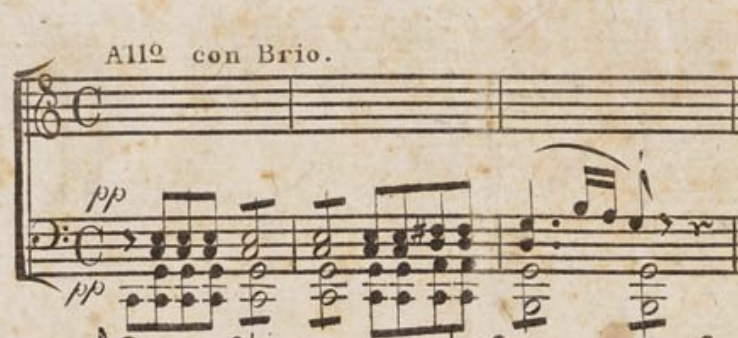 Prints (Editions)
Prints (Editions)Original edition: first edition according to the autograph authorised by the artist
Reprint: new edition, revised edition, pirated edition
Facsimile (lat. "make similar"): reproduction of a manuscript that corresponds to the original to the highest possible degreeThe image shows the original edition of the "Waldstein" sonata; Source: Beethoven-Haus Bonn
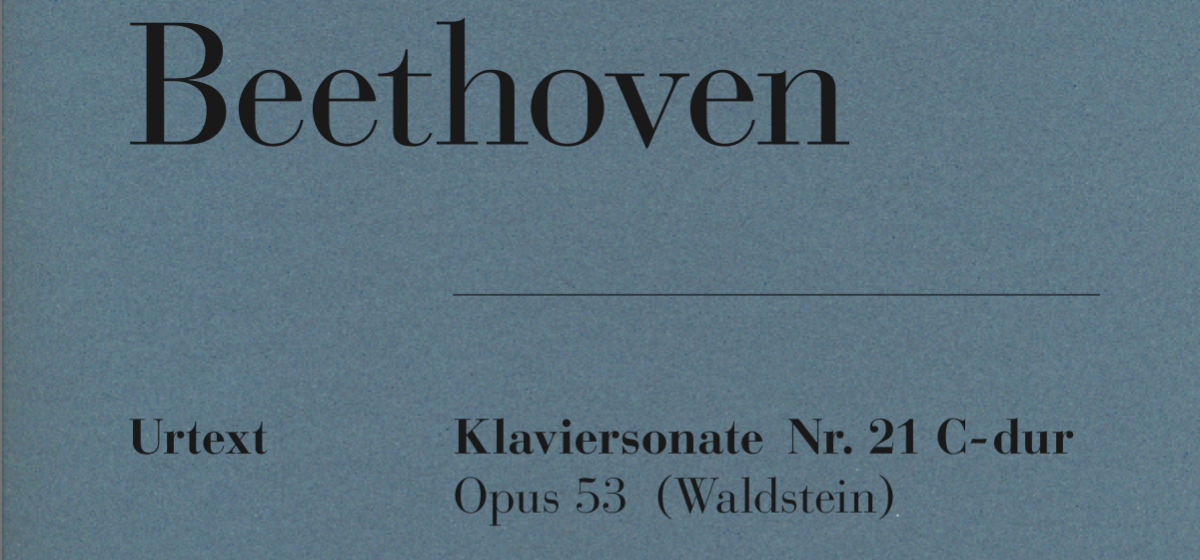 Modern Editions
Modern EditionsInstructive/interpretive edition: designed for performing, contains fingerings, bowings, articulation instructions
Arrangement: adaptations for other instrumentations or vocal range (e.g. piano reductions)
Study score: convenient format, less expensive; BUT: does not always adhere to scholarly standards!
Complete edition: complete works of one composer
Edition series: editions of specific work corpora (e.g. by genre, nations, periods, etc.)
Digital Editions: scans (e.g. IMSLP, NMA), encoded editions (e.g. Beethovens Werkstatt)The image shows an edition suitable for performance. Although it is labelled as "Urtext" ("original text"), it provides only one distinct version of a work, usually ignoring discrepancies between different sources such as the autograph and the first edition (in some cases, however, you may find additional variants included).
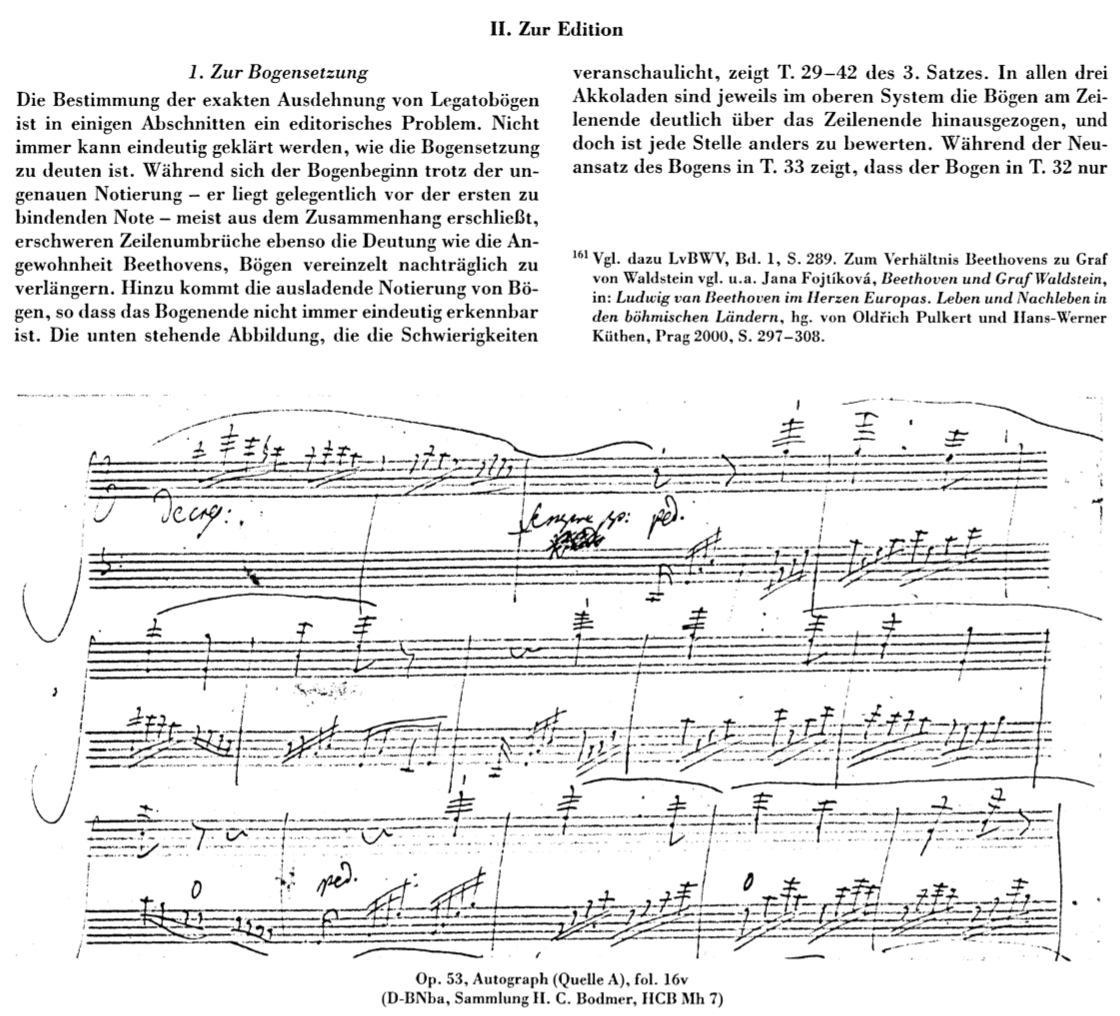 Critical Edition
Critical EditionConsists of several components: Preface/Introduction, edition of the score, detailed edition report, containing additional source material and detailed description of sources.
The image shows the edition report of Beethovens "Waldstein" sonata (Ludwig van Beethoven, Klaviersonaten II, ed. Frank Buchstein, Hans Schmidt, München 2016). It includes a detailed account of all the existing sources (e.g. autographs, later editions, etc.) and discusses every single editorial decision where discrepancies are found.
The differences between editions can be quite substantial, since they each serve different purposes. Compare the following images, which again show the first three bars of Beethoven's "Waldstein" sonata. Can you identify what kind of editions they are and which one is more suited for academic research?
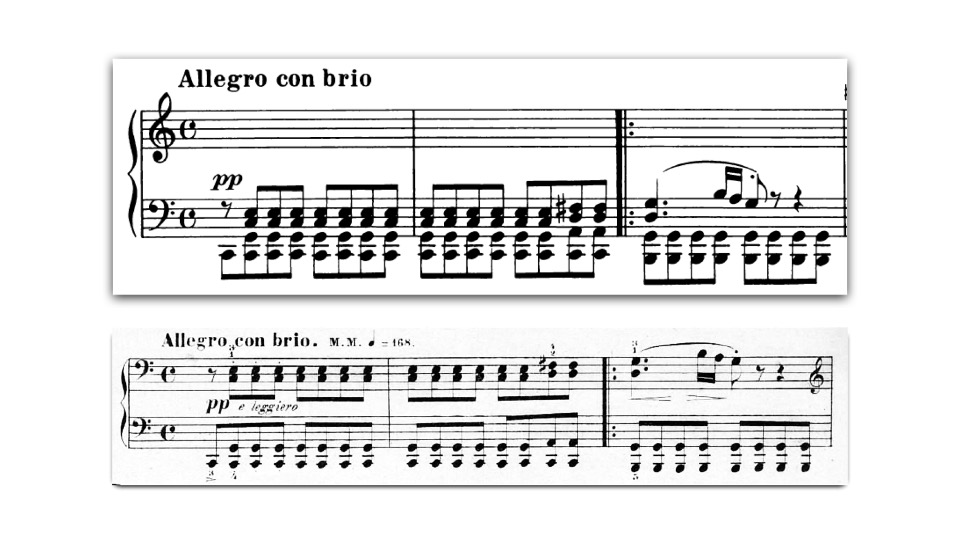
The version above is from the critical edition. Although it is set in modern notation, it tries to retain the layout of the autograph and first edition. The version below is an instructive edition which endeavours to achieve a clearer layout for performance situations by distributing the notes over two staves. In addition, it is enriched with numerous interpretative instructions (staccato dots, crescendo-decrescendo, tempo indication) which are not found in Beethoven's original.
Pros and Cons
The obvious advantage of primary sources is the absence of possible bias and mistakes an author of a secondary source can make. They are necessary in order to address questions which have not been covered in other research – which is itself one of the main goals of scholarly work.
However, interpreting primary sources is challenging and assessing their reliability can be a difficult task. Whenever possible, the information given by one source has to be checked against other sources, as original documents often give us only a small fraction of the whole picture, as the following example shows:
The further back in history we go, the scarcer the sources become and the greater are the limits in what we can choose to study. Take the following painting, which shows in great detail the royal chapel of the Duke Albrecht V. of Bavaria. Is it a realistic depiction of a performance situation? Or is it a somewhat stylised image designed to show the wealth and splendour of the Bavarian court in the 16th century? (For different interpretations of this painting see "Further reading".)
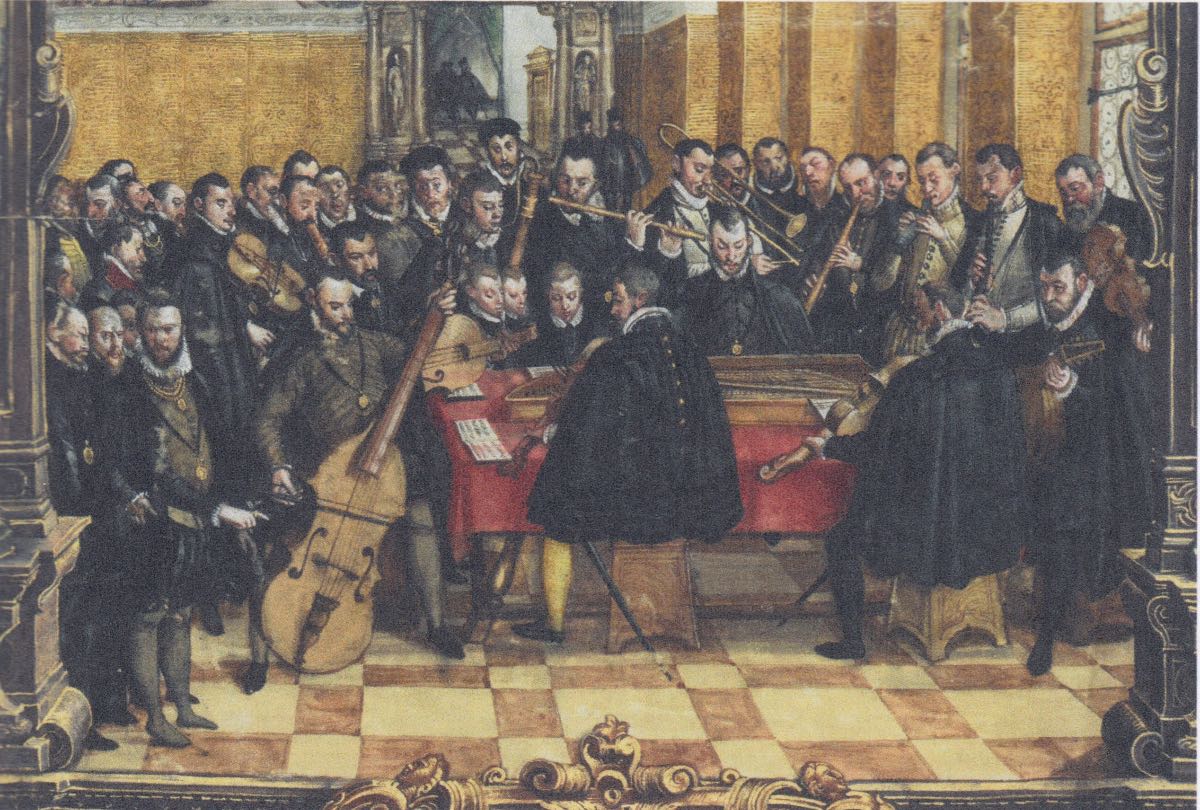
It is extremely important to stay as critical as possible when interpreting sources. Some useful questions to keep in mind are:
- Is there an author and if yes, what is their interest?
- How was the source created and passed on?
- What is the medium of the source and what is expressed through it?
- What is the intention behind the source?
- Who was it addressed to?
- What subjective/individual or structural/societal influences does the source contain?
Further reading
- Matthew Gardner, Sara Springfeld, Musikwissenschaftliches Arbeiten. Eine Einführung, 2nd ed., Kassel 2018.
- Kordula Knaus, Andrea Zedler (Hg.), Musikwissenschaft studieren. Arbeitstechnische und methodische Grundlagen, 2nd ed, München 2019.
On the court chapel of Albrecht V.
- Nicole Schwindt(-Gross), "Hans Mielichs bildliche Darstellung der Münchner Hofkapelle von 1570", in: Acta Musicologica 68, No. 1 (1996), pp. 48–85.
- Bernhard Rainer, "Die Münchner Kantorei bei der Kammermusik Mus. ms. A II(1, S. 187", in: Andacht – Repräsentation – Gelehrsamkeit. Der Bußpsalmenkodex Albrechts V. (BSB München, Mus.ms. A), ed. Andrea Gottdang, Bernhold Schmid, Wiesbaden 2020, pp. 383–409.
